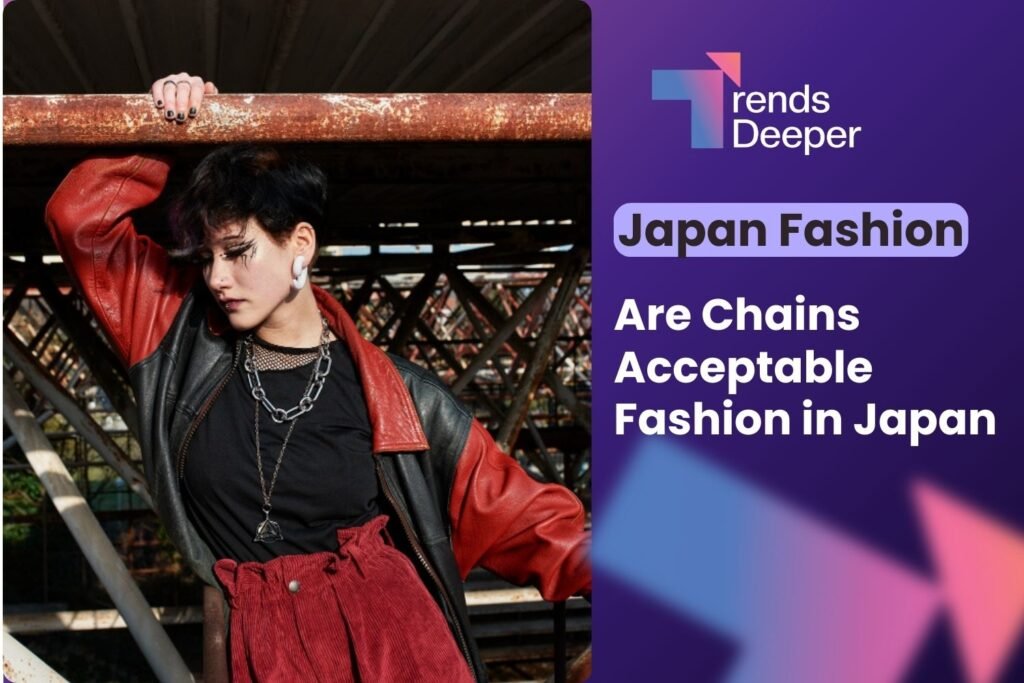Japanese fashion has long been a source of inspiration for the global fashion scene, blending traditional elegance with modern innovation. One common question for those curious about Japanese style is: Are chains acceptable fashion in Japan? The answer is a resounding yes! Chains are not only acceptable but are also widely embraced as part of Japan’s diverse and vibrant fashion culture. Let’s explore how chains are worn across different fashion trends in Japan and why they continue to be an essential accessory.
Chains in Japanese Fashion
Chains are not just an accessory; they are a statement piece. In Japan, fashion lovers use chains to elevate their outfits, from casual streetwear to avant-garde ensembles. Japanese fashion is known for its creativity, and chains serve as versatile accessories that can be styled in numerous ways to reflect individuality and personal flair.
Whether you’re in Harajuku or Ginza, you’ll notice how chains are incorporated into everyday fashion. From delicate gold chains to chunky silver links, they are used as necklaces, bracelets, belts, or even attached to clothing. Their presence in Japanese fashion is a testament to how deeply they are ingrained in the culture’s sense of style.
Chains in Japanese Street Fashion
Street fashion in Japan is an ever-evolving scene, where chains are frequently featured in various looks. Harajuku, for instance, is a fashion-forward district known for its eclectic mix of styles. In this area, chains are often used as bold accessories in punk, goth, and grunge outfits. They can be seen draped over oversized jackets, hanging from belts, or even connected to bags.
For those who embrace the streetwear aesthetic, chains help complete the look with an edgy vibe. Whether it’s a minimalist chain necklace or a series of chunky chains layered together, they add an extra dimension to the outfit, making it stand out in a sea of creative expressions.
Key Points:
- Chains are commonly worn in street fashion subcultures such as punk, goth, and grunge.
- Often used as accessories for jackets, belts, or bags.
- Chains contribute to the edgy and rebellious spirit of street fashion.
Chains in Visual Kei Fashion
Visual Kei is a subculture in Japan that combines music, fashion, and performance art. Known for its flamboyant and androgynous style, Visual Kei often features elaborate outfits that push the boundaries of conventional fashion. Chains are a staple in this style, adding drama and intensity to the look.
In Visual Kei, chains are used in more decorative and artistic ways. They may be wrapped around clothing, layered in accessories, or used to create an avant-garde design that complements the wearer’s overall aesthetic. Whether delicate or bold, chains in Visual Kei serve as an important element that brings together the outfit’s theatrical impact.
Key Points:
- Visual Kei fashion emphasizes bold, androgynous, and dramatic styles.
- Chains are often incorporated into the overall design of outfits.
- They add to the theatrical and artistic nature of Visual Kei.
Minimalist Use of Chains in Japanese Fashion
Chains are not always loud and bold. In more minimalist fashion, chains can be a subtle and elegant addition to an outfit. Japanese minimalist fashion is known for its clean lines and understated sophistication. Here, you’ll often find delicate gold or silver chains worn as necklaces or bracelets that complement rather than overpower the outfit.
This understated use of chains fits perfectly with the minimalist ethos, where less is more. The simplicity of the chain allows it to be worn on various occasions, from casual daywear to evening events, without drawing too much attention yet still adding a refined touch to the ensemble.
Key Points:
- Minimalist fashion uses delicate and simple chains.
- Chains add elegance without overpowering the outfit.
- They are versatile for both casual and formal wear.
Chains in Japanese High Fashion
Japan’s high fashion scene is known for pushing the boundaries of traditional design. Chains are often incorporated into luxury collections by renowned designers who blend contemporary and traditional elements. These designers use chains to symbolize strength, elegance, and sometimes even rebellion.
In high fashion, chains are featured in more elaborate ways, such as cascading down gowns, adorning handbags, or acting as statement jewelry pieces. High-end brands in Japan use chains to add both texture and depth to their collections, making them a key accessory in creating bold and avant-garde looks.
Key Points:
- Chains are a key feature in luxury fashion.
- Used in bold and avant-garde designs.
- Chains symbolize strength, elegance, and rebellion.
Chains as Symbols in Japanese Fashion
Chains in Japan’s fashion scene go beyond being mere accessories—they often carry symbolic meaning. In some contexts, chains represent strength and power, while in others, they may symbolize unity or connection. The versatility of chains allows them to be worn in various styles, each reflecting different meanings depending on the context.
For some, chains are a way to express individuality, while for others, they are a form of rebellion against traditional norms. No matter how they are worn, chains have become an integral part of Japanese fashion that speaks to the wearer’s personal identity and fashion statement.
Key Points:
- Chains often carry symbolic meanings such as strength, power, and unity.
- They are used to express individuality and rebellion.
- Chains reflect the wearer’s personal style and identity.
